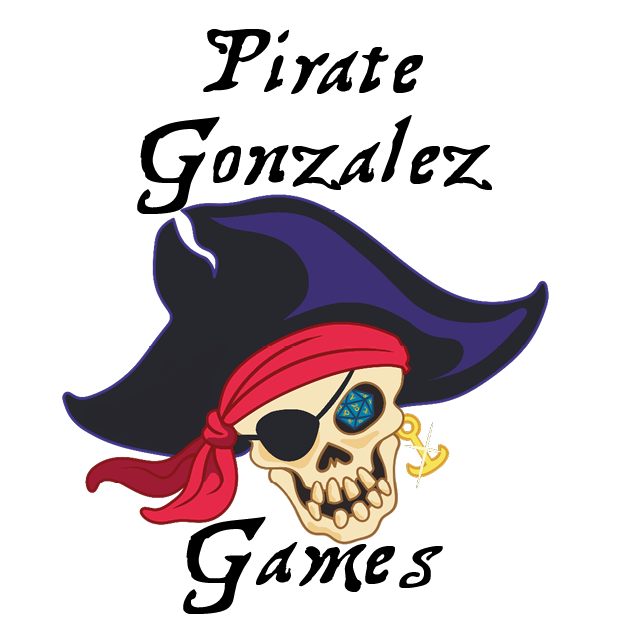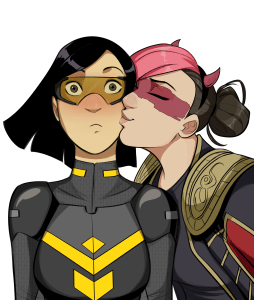Masks: Mass Combat
/Masks Mass Combat
This week I ran mass combat in a PBTA game. Much like other PBTA systems, it was pretty rules light and easy. I wanted to share the system I used, because it would work with any game system.
Summary
Create objectives or locations
Assign a Control Point Threshold (CPT) to each location
Players build a roster with named NPCs or resources (units)
GM assigns Control Point (CP) value to each unit
Players create teams from the roster and assign teams to the objectives or locations
The GM rolls a dice to randomize the final Control Point Threshold
If a team’s total Control Point value equals or exceeds the threshold, their mission is a success
If the team’s total Control Point value is less than the threshold, they may fail the mission and may suffer setbacks depending on how far under the threshold they were.
The Goal
This system allows you to direct large groups of NPCs to complete objectives. The main points of this system are:
a) Recalling named NPCs or recruiting people, and
b) Assigning people into teams and watching them interact.
The Setup
Create a set number of locations or objectives for the heroes to act against. This can include destroying important defenses, claiming a location, or taking out a dangerous threat. These are missions that can either succeed or fail, depending on the teams assigned to them.
Assign each of these locations a numerical value. This is called the Control Point Threshold.
(we’ll provide guidance on what kind of number to assign later).
The Players
The players will need to come up with allies or resources that they can deploy to these objectives.
Most player resources will have a Control Point value between 1 and 3. This is not necessarily a representation of how strong that unit is, but how much value they can provide. For example, a medic or healer might not be as strong as The Phoenix Knight, but could provide more support and therefore more value. The GM will determine the CP value of a unit.
CP 1 units are the most common, and most named NPCs or resources fall into this category. Noteworthy NPCs might have CP 2, and the heroes and other iconic characters might have CP 3.
Building the Roster
The players will have to build their roster of characters. The GM might provide some characters or resources they start with, but ultimately it is up to the players to pick and name the units they want.
This is a great time to go through notes, or remember NPCs that stuck out to the players. Half the fun is just remembering characters.
The players will come up with NPCs or resources they want to use, and the GM will either say they are available, unavailable, or potentially available and might need to be convinced or recruited. Any available or potentially available units will be given a CP value by the GM.
Assigning the Teams
Once the players have built the roster of available units, it’s time to assign them to objectives.
If the combined Control Point value of all of the units equals or exceeds the Control Point Threshold of a location, the mission or objective will be successful. Fights can still occurs and there might be setbacks, but in the end the mission will be successful.
Randomizing
To include some random elements, pick a die and roll it for each objective AFTER the players have assigned the final teams to each location. Make sure the players know about this before assigning teams, this shouldn’t be a surprise. This adds some risk-reward element to assigning the teams. If you make sure that you assign extra CP to one of the objectives, then you might have a guaranteed success. However, if you’re short on CP, you might need to pick and choose where to put extra resources.
You can use any number range with a die. For example, if you want a small variance you could use a d4, or decide that a d6 has a variance of +0 to +2 (1-2=+0, 3-4=+1, 5-6=+2).
Determining Control Point Thresholds
So how do you come up with the initial Control Point threshold?
It depends.
These values depend on how many Control Points you think your players will be able to obtain. For example, if your players can easily claim 30 Control Points, having the sum of all of your thresholds equal 20 means the players will likely easily succeed on each mission.
The randomization die you use can also influence this. A d6 is simple, which means you could have a 1-6 point swing. Increasing or decreasing the size of the die might make it easier or harder to meet the Control Point threshold.
My Approach
Come up with a list of units or resources you think the players will come up with, and assign them a CP value.
Total up the expected CP total for the players.
If you want the players to be likely to succeed, make the total threshold values under or close to this total.
If you want the players to make tough choices, make the total threshold values equal to or just slightly above this total.
The players are likely to forget about some of the units you thought of, but are also likely to come up with some ideas that you didn’t.
Another way to come up with the Control Point Threshold value for an objective is to build it like the players build a roster. Think of the named opposition or valuable resources they might have at that location, and assign them their own Control Point values. Total these values up to create the location’s Control Point Threshold.
We used this system in my Masks: Phoenix Academy game!
Results
This system isn’t designed to accurately represent groups of people fighting. It’s meant to create teams of NPCs and resources that the players care about, and send them on a mission together to accomplish important goals.
Most of the fun from this system comes from the players creating their roster and teams. Don’t worry about making this numbers too high or too hard for the players.







